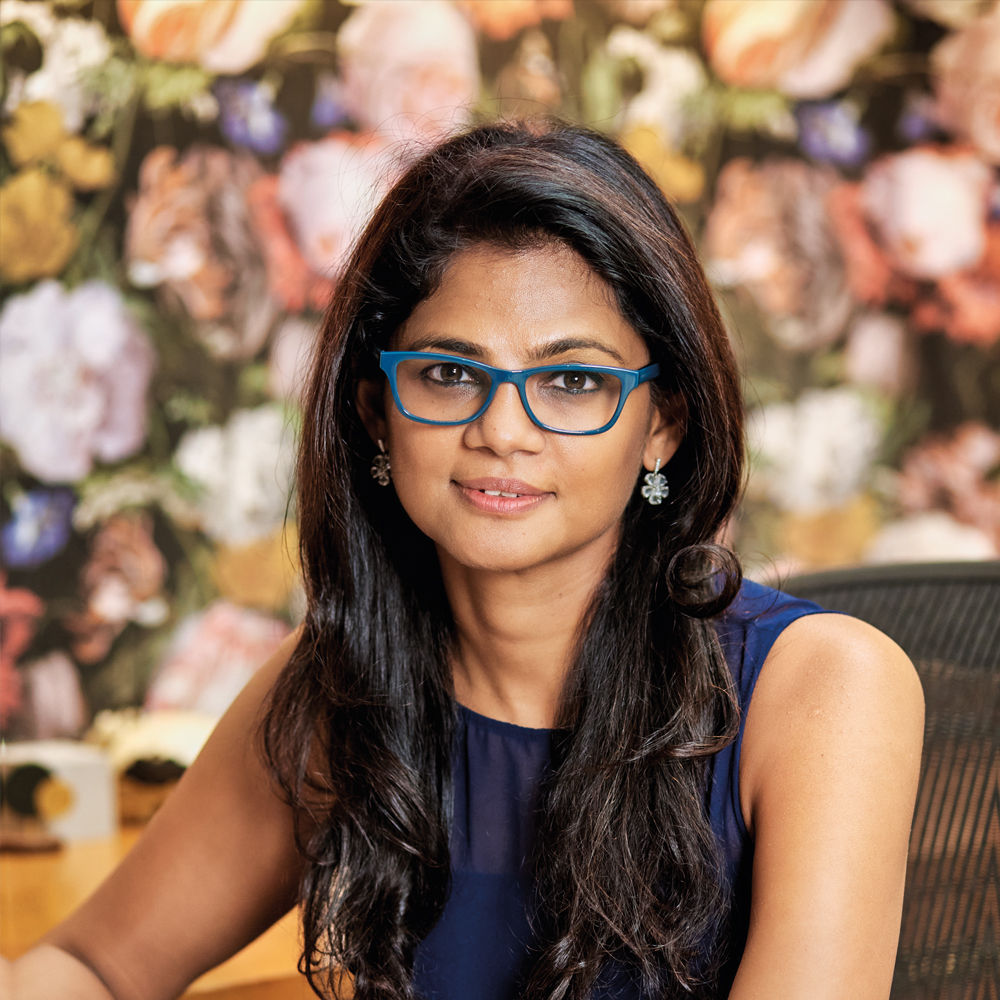

Apoorva Shroff approaches mood boarding as both an analytical and intuitive process, relying on observation and instinct to shape her design narratives. While digital tools like Photoshop aid in composition and visualisation, she emphasizes the importance of physical material samples to capture the true essence of a space. In the second installment of our exclusive ‘What’s on my vision board?’ series, we explore the evolving art of mood boarding with insights from Apoorva about her process and her commitment to achieve a balance between innovation and tactile experience.
How has your mood board creation process evolved with digital tools, and what balance do you strike between physical and digital elements in your conceptual phase?
To be honest, I haven’t yet leaned on the shoulders of Artificial Intelligence (AI) for the conceptualisation of my designs. I say “not yet” as I will happily adapt when I get comfortable with new technologies. Having said that, the software Photoshop plays a pivotal role with the composition of the mood board as it facilitates layering and framing with unparalleled ease. While digital compositions help visualise the basic blend of colours, it’s important to keep actual samples ready, so you don’t miss out on the feel while the look takes precedence.
Walk us through your thought process when you begin a new mood board – what elements do you consider first, and how do you layer colours, textures, and materials to build your narrative?
Visiting the space is always step number one. Observing the amount of natural light that pours in, the height of the ceilings and the view is sacrosanct. Next comes the application of the brief— the colours will change based on the need; is it a space for children, a restaurant, a temple or something else specific. Last but most important is how you as the designer apply your talent to make the space special.
How do you use mood boards to communicate with clients, and what techniques have you developed to help them understand your vision through these visual tools?
3D visuals that represent the space precisely almost always seal the deal. It’s very difficult for a client to understand what’s in your mind through a spin of words. 3D renders will clear up any misunderstandings and are almost always the best way forward. There are 3D simulator glasses now available where clients can walk into a space open door and get an actual feel for scale.
Can you share an example of a project where the mood board played a pivotal role in shaping the final design outcome? What were the key elements that translated most successfully from concept to reality?
During the design phase of Airavat, a holiday home we designed in Khandala, we used 3D simulator glasses and entered the fairly elaborate sketchup 3D model developed for the home. Immediately I felt that the scale for one part of the home was too huge. We changed the design to solve for this and today now that the home is built, I’m so grateful that I was able to make that important call so early into the design phase
Looking ahead to 2025, what emerging materials, technologies, or design philosophies do you anticipate will dominate mood boards?
AI is becoming impossible to ignore and according to me adapting to these fast-evolving technologies will be the only way forward. Mid Journey and Moodboard Maker are some of the AI tools we are beginning to use. Home automation has come a long way from when I first used it and has become a vital part of homes not just for its convenience but because it plays a huge role in the conservation of energy and making a home sustainable. Biophilic inspiration is personally my favourite way to start the design process. With two decades of experience in the field, I now have so much information on all that you have mentioned stored in different corners of my brain. When I pick up my pencil and start thinking it all comes together like a spider’s web.
In this home designed by Sonal R Mutha and Aniketh Bafna, founders and principal designers…
Essentia Home’s journey in redefining luxury interiors took a bold new step as it opened…
Retail design is a balancing act. Between creating spaces that attract and those that sell,…
A few days ago, I found myself navigating an unfamiliar (for me) corner of Delhi—Vasant…
Jugal Mistri, Founder & Principal Architect, JMA Mumbai, sees mood boarding as an evolving narrative…
For Rachna Agarwal, Founder and Design Ideator, Studio IAAD, mood boards serve as a bridge…